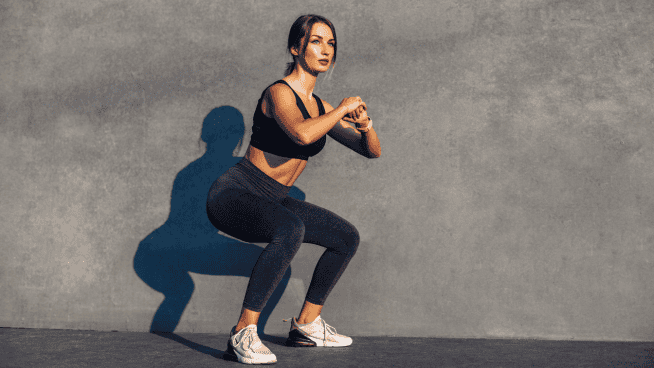How to Perform the Farmer’s Walk with Dumbbells
Farmer’s Walk with Dumbbells might be one of the best bang-for-your-buck exercises you can perform. The Farmer’s Walk allows you to accomplish a tremendous amount in a single exercise. Personally, I think it is up there with lifts like the Bench Press, Squat and Deadlift in terms of its value and effectiveness. It is an exercise everyone can benefit from and should include in their routines. Here are five big benefits of Dumbbell Farmer’s Walks.
Grip strength
Perhaps the most obvious benefit of Farmer’s Walks is an increase in grip strength. You are gripping two heavy dumbbells and walking a good stretch of distance with them, which means you’re relying heavily on your grip strength throughout the movement. Grip strength makes you a better athlete and can improve your performance on other lifts.
Shoulder stability
Gripping the dumbbells tightly and keeping your shoulders centered (meaning not allowing them to get pulled forward, down, back or up), strengthens the shoulder stabilizers (posterior deltoid, infraspinatus and trapezius). This can help prevent injuries both on the field and in the weight room.
Core stability
The Farmer’s Walk challenges your ability to keep your shoulders level and your torso tall. Think about it: You are carrying two heavy weights, and each one wants to pull you to a side or pull your shoulders to the ground. You have to resist side-to-side swaying and forward-and-back rocking on each and every step. It requires phenomenal core stability to resist those forces and maintain good posture throughout the movement.
Leg stability
You have to stabilize on one leg for a brief moment on each step, essentially balancing on one leg when you are between steps. That means your foot, knee and hips must have the strength to stabilize your body weight plus the weight you are carrying. This builds lower-body stability, which increases strength and reduces your risk of injury.
Anaerobic workout
An often overlooked benefit of the Farmer’s Walk is its ability to increase the body’s anaerobic energy system. If you pick up a weight and walk 50 yards or more, you’ll likely be out of breath. If not, pick up a heavier weight. The ability to maintain good positioning under this kind of pressure while also moving fluidly requires a special type of bodily endurance and conditioning.
Performing the Farmer’s Walk
Selecting weight
Start with a dumbbell equal to a quarter of your body weight in each hand. If you weigh 200 pounds, hold a 50-pound dumbbell in each hand.
Work your way up to half your body weight in each hand. So if you weigh 200 pounds, you’ll work up to holding a 100-pound dumbbell in each hand.
The ultimate goal is to carry your body weight in each hand, which is admittedly very tough and should only be attempted after extensive training. Performing a Farmer’s Walk while holding twice your weight requires an extraordinary amount of full-body strength.
Selecting distance
I typically choose a distance in the range of 25 to 100 yards. If I am carrying close to my body weight in each hand, I only walk about 25 yards. If you are doing a quarter to a half of your body weight in each hand, start by walking 40 yards and work your way up from there.
Hand position
Place your hands in the middle of the dumbbell. Often, people allow the dumbbells to tilt forward or backward. The dumbbell should to parallel to the ground at all times.
Body position
Your shoulders should be level and your back should have a natural curve as a result of not over-extending the lower back or flexing the shoulders. Grab the dumbbells in or close to the middle of their handles.
Ways to walk
If you’re new to Farmer’s Walks, begin with a simple, casual walking pace. Once you get comfortable with that, try some unique variations to increase difficulty.
The in-line walk requires you to set one foot straight in front of the other while you walk, almost as if you’re balancing on a tight rope. This requires leg and torso control.
The high-knee walk requires you to bring one knee up level with the hip with each step. This requires greater single-leg stability and control of the pelvis.
RECOMMENDED FOR YOU
MOST POPULAR
How to Perform the Farmer’s Walk with Dumbbells
Farmer’s Walk with Dumbbells might be one of the best bang-for-your-buck exercises you can perform. The Farmer’s Walk allows you to accomplish a tremendous amount in a single exercise. Personally, I think it is up there with lifts like the Bench Press, Squat and Deadlift in terms of its value and effectiveness. It is an exercise everyone can benefit from and should include in their routines. Here are five big benefits of Dumbbell Farmer’s Walks.
Grip strength
Perhaps the most obvious benefit of Farmer’s Walks is an increase in grip strength. You are gripping two heavy dumbbells and walking a good stretch of distance with them, which means you’re relying heavily on your grip strength throughout the movement. Grip strength makes you a better athlete and can improve your performance on other lifts.
Shoulder stability
Gripping the dumbbells tightly and keeping your shoulders centered (meaning not allowing them to get pulled forward, down, back or up), strengthens the shoulder stabilizers (posterior deltoid, infraspinatus and trapezius). This can help prevent injuries both on the field and in the weight room.
Core stability
The Farmer’s Walk challenges your ability to keep your shoulders level and your torso tall. Think about it: You are carrying two heavy weights, and each one wants to pull you to a side or pull your shoulders to the ground. You have to resist side-to-side swaying and forward-and-back rocking on each and every step. It requires phenomenal core stability to resist those forces and maintain good posture throughout the movement.
Leg stability
You have to stabilize on one leg for a brief moment on each step, essentially balancing on one leg when you are between steps. That means your foot, knee and hips must have the strength to stabilize your body weight plus the weight you are carrying. This builds lower-body stability, which increases strength and reduces your risk of injury.
Anaerobic workout
An often overlooked benefit of the Farmer’s Walk is its ability to increase the body’s anaerobic energy system. If you pick up a weight and walk 50 yards or more, you’ll likely be out of breath. If not, pick up a heavier weight. The ability to maintain good positioning under this kind of pressure while also moving fluidly requires a special type of bodily endurance and conditioning.
Performing the Farmer’s Walk
Selecting weight
Start with a dumbbell equal to a quarter of your body weight in each hand. If you weigh 200 pounds, hold a 50-pound dumbbell in each hand.
Work your way up to half your body weight in each hand. So if you weigh 200 pounds, you’ll work up to holding a 100-pound dumbbell in each hand.
The ultimate goal is to carry your body weight in each hand, which is admittedly very tough and should only be attempted after extensive training. Performing a Farmer’s Walk while holding twice your weight requires an extraordinary amount of full-body strength.
Selecting distance
I typically choose a distance in the range of 25 to 100 yards. If I am carrying close to my body weight in each hand, I only walk about 25 yards. If you are doing a quarter to a half of your body weight in each hand, start by walking 40 yards and work your way up from there.
Hand position
Place your hands in the middle of the dumbbell. Often, people allow the dumbbells to tilt forward or backward. The dumbbell should to parallel to the ground at all times.
Body position
Your shoulders should be level and your back should have a natural curve as a result of not over-extending the lower back or flexing the shoulders. Grab the dumbbells in or close to the middle of their handles.
Ways to walk
If you’re new to Farmer’s Walks, begin with a simple, casual walking pace. Once you get comfortable with that, try some unique variations to increase difficulty.
The in-line walk requires you to set one foot straight in front of the other while you walk, almost as if you’re balancing on a tight rope. This requires leg and torso control.
The high-knee walk requires you to bring one knee up level with the hip with each step. This requires greater single-leg stability and control of the pelvis.
[youtube video=”09YXDg8tqes” /] [cf]skyword_tracking_tag[/cf]









